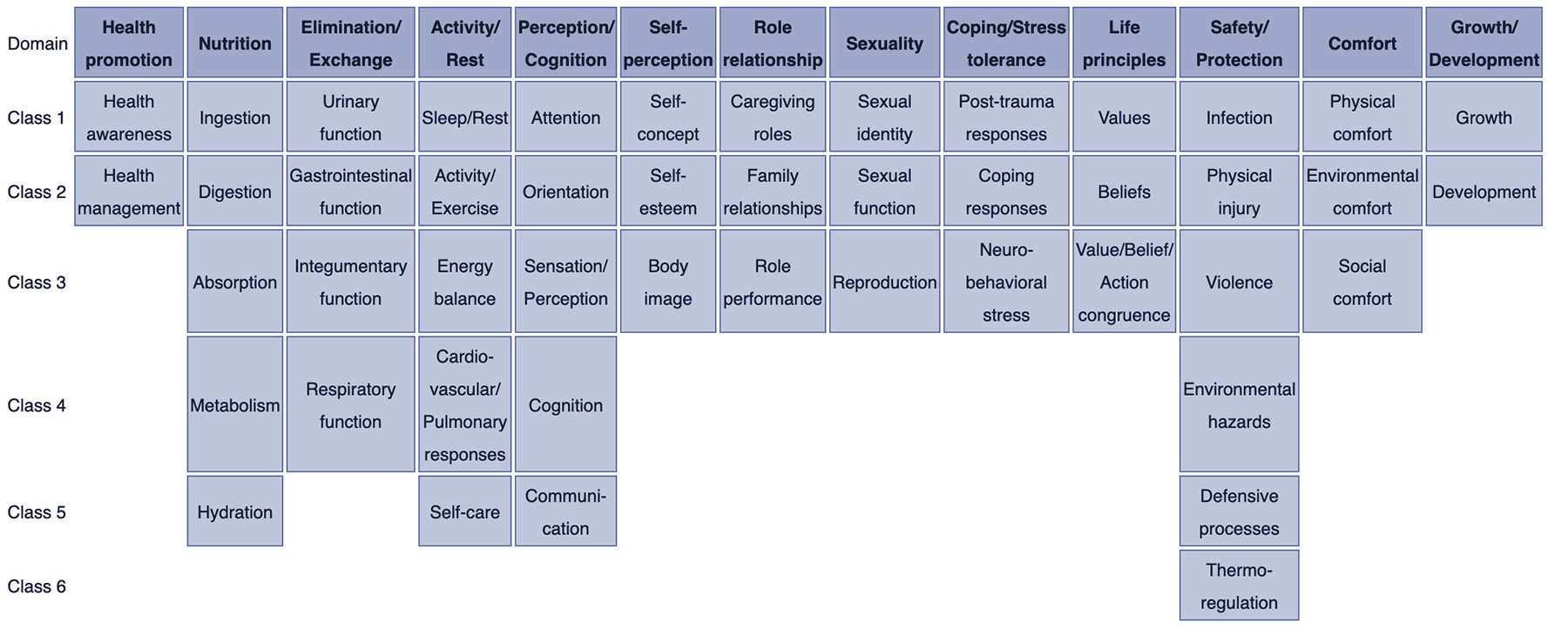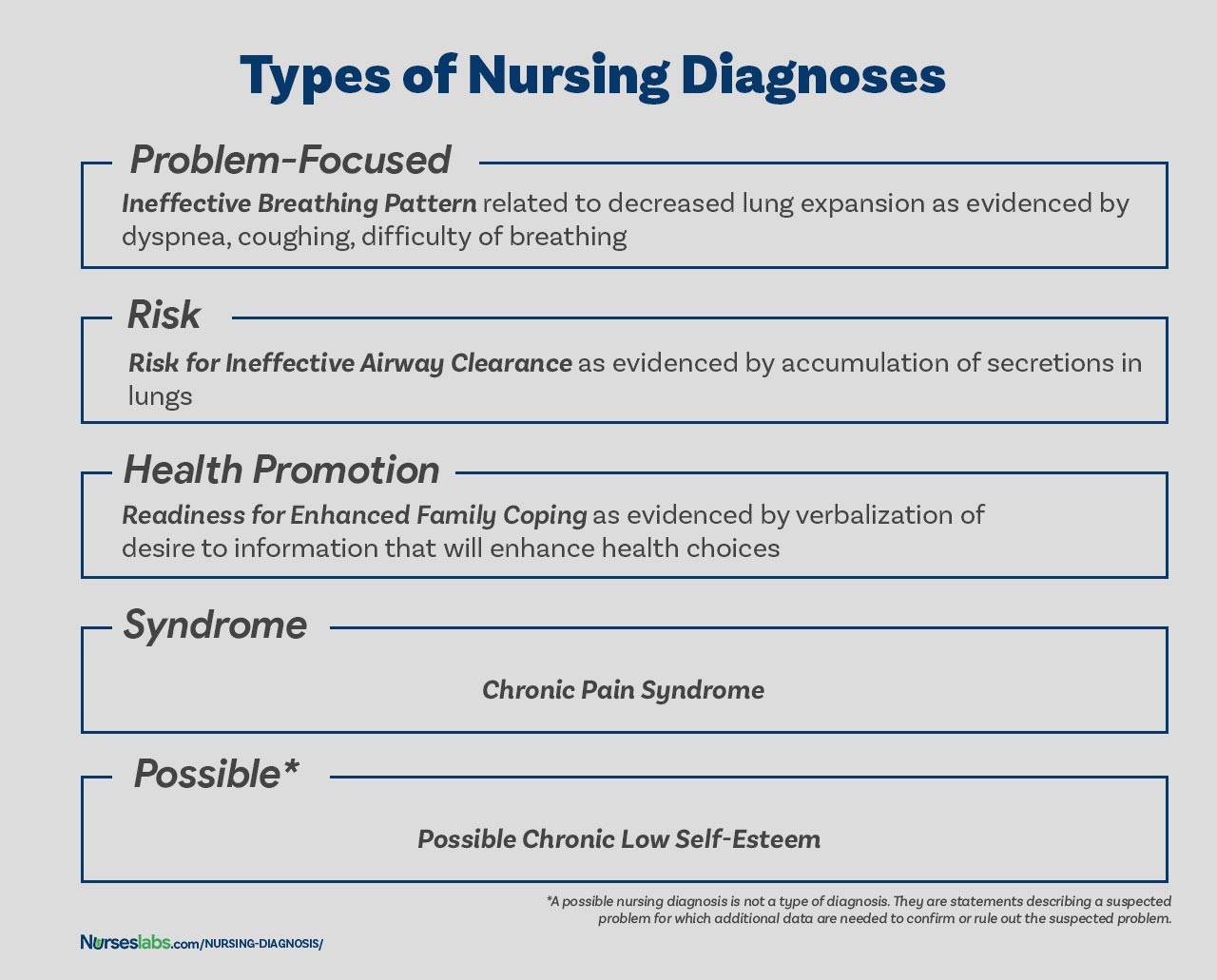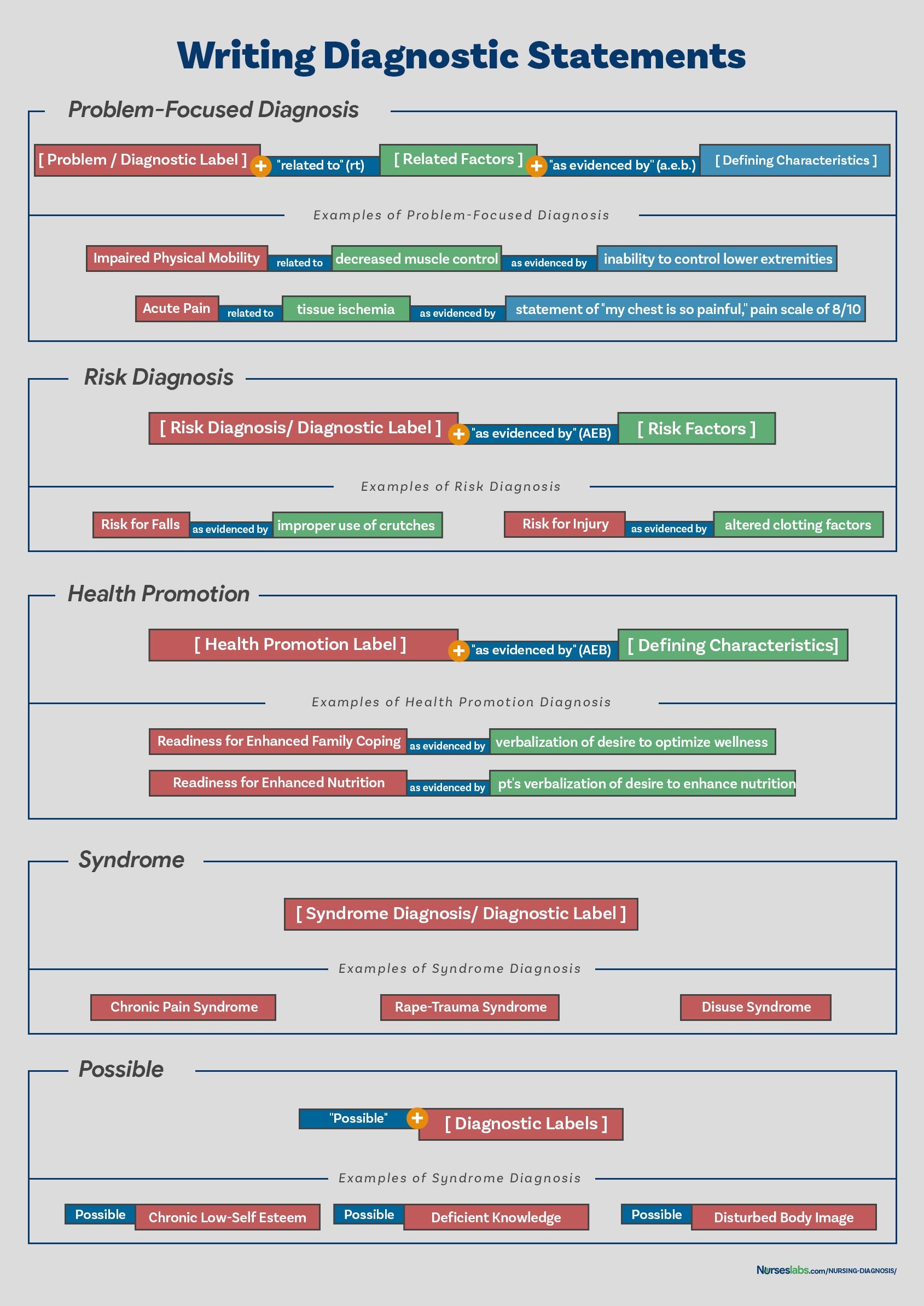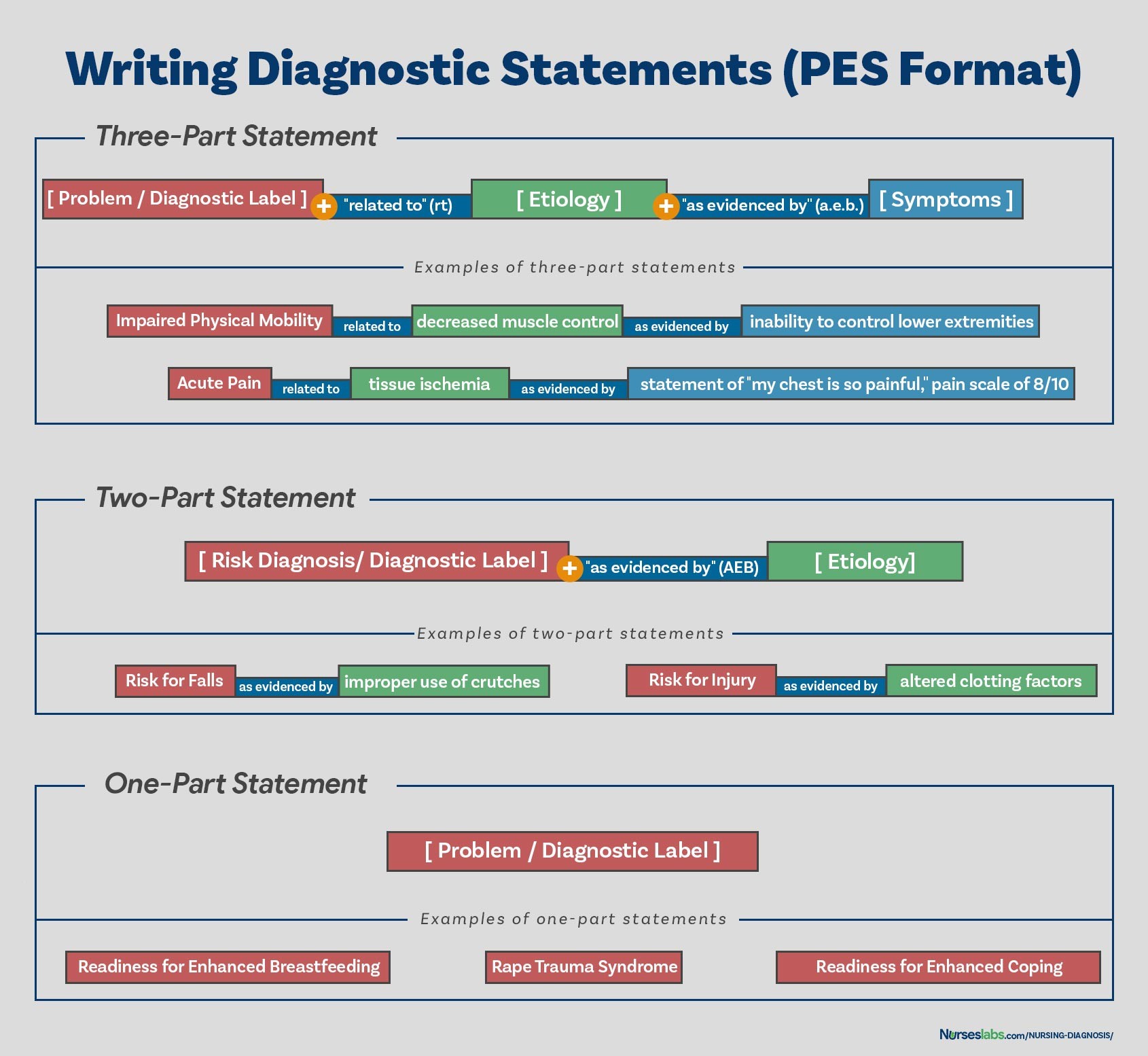Nursing diagnosis is a cornerstone of effective patient care. It’s the crucial step where nurses analyze patient data to identify health problems and guide the development of personalized care plans. For nursing students and seasoned professionals alike, mastering the art of formulating nursing diagnoses is essential for delivering high-quality, patient-centered care. This guide will walk you through the intricacies of nursing diagnosis, providing a clear, step-by-step approach to enhance your diagnostic skills.
Understanding Nursing Diagnosis: What and Why
Before diving into the “how-to,” it’s important to understand what a nursing diagnosis is and why it’s so vital in healthcare. A nursing diagnosis is a clinical judgment about individual, family, or community experiences/responses to actual or potential health problems and life processes. It’s a statement that describes a patient’s health condition that nurses are licensed and competent to treat.
Nursing diagnoses serve several key purposes:
- Sharpening Critical Thinking: For nursing students, the process of formulating diagnoses is an invaluable tool for developing problem-solving and critical thinking skills.
- Prioritizing Care: Nursing diagnoses help identify the most pressing patient needs, guiding nurses to prioritize interventions effectively.
- Outcome Measurement: They provide a basis for setting measurable patient outcomes, essential for quality assurance and demonstrating the impact of nursing care.
- Holistic Patient View: Nursing diagnoses encourage a comprehensive understanding of how patients respond to health issues, considering their strengths and resources.
- Professional Communication: They establish a common language among nurses and the broader healthcare team, fostering clear and effective communication.
- Evaluating Care Effectiveness: Nursing diagnoses provide a benchmark for evaluating the benefits and cost-effectiveness of nursing interventions.
Nursing Diagnosis vs. Medical Diagnosis vs. Collaborative Problems: Key Differences
It’s crucial to differentiate nursing diagnoses from medical diagnoses and collaborative problems to understand the nurse’s unique role in patient care.
Nursing Diagnosis: Focuses on the patient’s response to health conditions. It’s within the nurse’s scope of practice to address these responses with independent nursing interventions. For example, a patient with pneumonia (medical diagnosis) might experience “Ineffective Airway Clearance” (nursing diagnosis) due to increased secretions.
Medical Diagnosis: Identifies diseases or pathological conditions. This is made by a physician or advanced practitioner and directs medical treatment. Using the same example, pneumonia is the medical diagnosis requiring physician-prescribed treatments like antibiotics.
Collaborative Problems: Potential or actual health complications that require both medical and nursing interventions. Nurses monitor for these complications and implement interventions in collaboration with the medical team. A patient with pneumonia is at risk for a collaborative problem like “Potential Complication: Sepsis,” requiring both medical interventions (antibiotics) and nursing interventions (monitoring vital signs, infection control).
NURSING DIAGNOSIS TAXONOMY II. Taxonomy II for nursing diagnosis contains 13 domains and 47 classes. Image via: Wikipedia.com
Understanding these distinctions is fundamental to correctly applying the nursing process and ensuring patients receive comprehensive care addressing all aspects of their health needs.
Navigating the Classification of Nursing Diagnoses: Taxonomy II
To standardize and organize nursing diagnoses, Taxonomy II was developed. This classification system, adopted in 2002, is based on Dr. Mary Joy Gordon’s Functional Health Patterns and provides a structured framework for nurses.
Taxonomy II is organized into three levels:
- Domains (13): Broad categories of human functioning (e.g., Health Promotion, Nutrition, Activity/Rest).
- Classes (47): Subcategories within domains, providing more specific groupings (e.g., Health Management within Health Promotion, Ingestion within Nutrition).
- Nursing Diagnoses: Specific, standardized labels for patient health problems, categorized under domains and classes.
Diagnoses are coded according to seven axes, including diagnostic concept, time, unit of care, age, health status, descriptor, and topology. This multi-axial system allows for a detailed and nuanced classification. Importantly, diagnoses are listed alphabetically by concept, improving accessibility and ease of use.
Here’s a glimpse into the 13 Domains of Taxonomy II:
- Domain 1: Health Promotion: Focuses on enhancing well-being and preventing illness.
- Classes: Health Awareness, Health Management
- Domain 2: Nutrition: Addresses activities related to intake and utilization of nutrients.
- Classes: Ingestion, Digestion, Absorption, Metabolism, Hydration
- Domain 3: Elimination and Exchange: Concerns bodily processes of excretion and gas exchange.
- Classes: Urinary Function, Gastrointestinal Function, Integumentary Function, Respiratory Function
- Domain 4: Activity/Rest: Covers physical activity, sleep, and energy balance.
- Classes: Sleep/Rest, Activity/Exercise, Energy Balance, Cardiovascular/Pulmonary Responses, Self-Care
- Domain 5: Perception/Cognition: Relates to sensory and mental processes.
- Classes: Attention, Orientation, Sensation/Perception, Cognition, Communication
- Domain 6: Self-Perception: Focuses on self-concept, self-esteem, and body image.
- Classes: Self-Concept, Self-Esteem, Body Image
- Domain 7: Role Relationship: Concerns connections and associations between people.
- Classes: Caregiving Roles, Family Relationships, Role Performance
- Domain 8: Sexuality: Addresses sexual identity, function, and reproduction.
- Classes: Sexual Identity, Sexual Function, Reproduction
- Domain 9: Coping/Stress Tolerance: Covers psychological and behavioral responses to stressors.
- Classes: Post-Trauma Responses, Coping Responses, Neurobehavioral Stress
- Domain 10: Life Principles: Relates to values, beliefs, and spiritual practices.
- Classes: Values, Beliefs, Value/Belief/Action Congruence
- Domain 11: Safety/Protection: Concerns safeguarding from harm, injury, and infection.
- Classes: Infection, Physical Injury, Violence, Environmental Hazards, Defensive Processes, Thermoregulation
- Domain 12: Comfort: Addresses physical, environmental, and social well-being.
- Classes: Physical Comfort, Environmental Comfort, Social Comfort
- Domain 13: Growth/Development: Concerns age-appropriate physical and psychosocial progression.
- Classes: Growth, Development
Understanding Taxonomy II provides a structured approach to identifying and categorizing nursing diagnoses, ensuring comprehensive and standardized patient care.
The Nursing Process: The Framework for Diagnosis
Nursing diagnosis is the second step in the nursing process, a systematic, five-step approach to patient care. The nursing process is an iterative, problem-solving approach that allows nurses to provide individualized and holistic care. The five stages are:
- Assessment: Gathering subjective and objective data about the patient’s health status. This involves interviewing the patient, performing physical examinations, reviewing medical records, and consulting with other healthcare providers.
- Diagnosis: Analyzing the assessment data to identify patient problems and formulate nursing diagnoses. This is the focus of this guide.
- Planning: Developing a nursing care plan based on the nursing diagnoses. This involves setting patient-centered goals and outcomes, and planning nursing interventions.
- Implementation: Putting the nursing care plan into action. This includes performing nursing interventions, coordinating care, and educating the patient and family.
- Evaluation: Determining the effectiveness of the nursing care plan and making revisions as needed. This involves monitoring patient progress towards goals and outcomes, and evaluating the effectiveness of nursing interventions.
Each step of the nursing process requires critical thinking and clinical judgment. A strong understanding of nursing diagnoses is paramount for effective progression through each stage, leading to optimal patient outcomes.
Types of Nursing Diagnoses: Choosing the Right Label
There are four main types of nursing diagnoses, each serving a distinct purpose in describing a patient’s health status. Understanding these types is crucial for selecting the most appropriate diagnosis.
TYPES OF NURSING DIAGNOSES. The four types of nursing diagnosis are Actual (Problem-Focused), Risk, Health Promotion, and Syndrome.
1. Problem-Focused (Actual) Nursing Diagnosis: Addressing Current Issues
A problem-focused diagnosis, also known as an actual diagnosis, describes a client problem that is present at the time of assessment. It’s based on identifiable signs and symptoms. While it addresses a current issue, it’s not inherently more critical than a risk diagnosis; in many cases, preventing a potential problem (risk diagnosis) can be the higher priority.
Problem-focused diagnoses have three key components, forming the PES format (Problem, Etiology, Signs/Symptoms):
- Nursing Diagnosis Label: A standardized NANDA-I label that concisely describes the problem (e.g., Pain, Impaired Physical Mobility).
- Related Factors (Etiology): Factors contributing to or causing the problem, linked by “related to” (e.g., Pain related to surgical incision).
- Defining Characteristics (Signs/Symptoms): Observable cues and symptoms that provide evidence of the diagnosis, linked by “as evidenced by” (e.g., Pain related to surgical incision as evidenced by patient report of pain at incision site and guarding behavior).
Example: Acute Pain related to surgical incision as evidenced by patient report of pain at incision site, guarding behavior, and increased heart rate.
2. Risk Nursing Diagnosis: Identifying Potential Problems
A risk nursing diagnosis describes a problem that does not yet exist but is likely to develop if nurses don’t intervene. It’s a clinical judgment based on risk factors – conditions or vulnerabilities that increase a patient’s susceptibility to a problem. These diagnoses are proactive, guiding preventative nursing care.
Risk diagnoses have two components:
- Risk Diagnosis Label: A standardized NANDA-I label preceded by “Risk for” (e.g., Risk for Infection, Risk for Falls).
- Risk Factors: Factors that increase the patient’s vulnerability, linked by “as evidenced by” (e.g., Risk for Infection as evidenced by surgical wound and compromised immune system).
Example: Risk for Falls as evidenced by muscle weakness, history of previous falls, and impaired mobility.
Important Note: Risk diagnoses use “as evidenced by” to connect the diagnosis label to risk factors, not defining characteristics, as the problem is not yet present.
3. Health Promotion Nursing Diagnosis: Enhancing Well-being
A health promotion diagnosis, also called a wellness diagnosis, focuses on a patient’s desire and motivation to improve their well-being. It identifies a patient’s readiness to enhance specific health behaviors. These diagnoses are strengths-based and focus on achieving a higher level of wellness.
Health promotion diagnoses typically have one component:
- Nursing Diagnosis Label: A standardized NANDA-I label starting with “Readiness for Enhanced” (e.g., Readiness for Enhanced Breastfeeding, Readiness for Enhanced Nutrition). Related factors can be added for clarity, but are not always required.
Example: Readiness for Enhanced Breastfeeding as evidenced by first-time mother expressing interest in learning breastfeeding techniques.
4. Syndrome Nursing Diagnosis: Recognizing Clusters of Diagnoses
A syndrome diagnosis represents a cluster of actual or risk nursing diagnoses that are predicted to occur together due to a specific event or situation. These are also one-part statements, using only the diagnostic label. Syndrome diagnoses recognize patterns of problems that often co-occur.
Examples:
- Rape Trauma Syndrome
- Disuse Syndrome
- Relocation Stress Syndrome
5. Possible Nursing Diagnosis: Awaiting Confirmation (Not a Type)
A possible nursing diagnosis is not a formal type like the four above. It indicates a suspected problem requiring further data to confirm or rule out. It’s a temporary label used to communicate a potential issue that needs investigation.
Example: Possible Risk for Ineffective Coping related to unfamiliarity with resources. This would prompt the nurse to gather more data to confirm or refute this suspicion.
Deconstructing the Components of a Nursing Diagnosis Statement
A well-formulated nursing diagnosis statement typically comprises three essential components:
- Problem (Diagnostic Label) and Definition: A concise description of the patient’s health problem.
- Etiology (Related Factors): The probable cause(s) or contributing factors to the problem (used for problem-focused diagnoses).
- Defining Characteristics/Risk Factors: Signs and symptoms validating the problem (for problem-focused diagnoses) or factors increasing risk (for risk diagnoses).
1. Problem Statement (Diagnostic Label): Naming the Issue
The problem statement, or diagnostic label, is a standardized term from a recognized classification system like NANDA-I that concisely describes the patient’s health response. It has two parts:
- Qualifier (Modifier): Words that add specific meaning or detail to the label (e.g., Deficient, Impaired, Ineffective, Risk for).
- Focus of the Diagnosis: The area of health concern (e.g., Fluid Volume, Gas Exchange, Tissue Perfusion, Injury).
| Qualifier | Focus of the Diagnosis |
|---|---|
| Deficient | Fluid volume |
| Imbalanced | Nutrition: Less Than Body Requirements |
| Impaired | Gas Exchange |
| Ineffective | Tissue Perfusion |
| Risk for | Injury |




Some one-word nursing diagnoses (e.g., Anxiety, Constipation, Nausea) inherently combine the qualifier and focus.
2. Etiology (Related Factors): Identifying the “Why”
The etiology, or related factors, component identifies the probable causes or contributing factors to the health problem. It answers the question “Why is this problem occurring?”. Etiology is crucial because it directs nursing interventions to address the root cause of the problem. It’s linked to the problem statement using the phrase “related to.”
Example: Impaired Physical Mobility related to pain and stiffness. Here, “pain and stiffness” is the etiology. Interventions would focus on managing pain and improving joint mobility to address the impaired mobility.
3. Risk Factors (For Risk Diagnoses): Identifying Vulnerabilities
For risk nursing diagnoses, risk factors replace etiological factors. Risk factors are conditions or situations that increase a patient’s vulnerability to developing a problem. They are written after “as evidenced by” in the diagnostic statement.
Examples:
- Risk for Falls as evidenced by history of falls and use of assistive devices.
- Risk for Infection as evidenced by surgical incision and immunosuppression.
4. Defining Characteristics (Signs and Symptoms): Validating Actual Problems
Defining characteristics are the observable signs and symptoms that cluster together, indicating the presence of an actual nursing diagnosis. They provide evidence for the diagnosis. For risk diagnoses, defining characteristics are not present, as the problem hasn’t developed yet. Defining characteristics are linked to the problem statement using “as evidenced by” or “as manifested by.”
Example: Deficient Fluid Volume related to excessive vomiting as evidenced by dry mucous membranes, decreased urine output, and decreased blood pressure. “Dry mucous membranes,” “decreased urine output,” and “decreased blood pressure” are the defining characteristics.
The Diagnostic Process: A Step-by-Step Approach to Accurate Diagnosis
Formulating accurate nursing diagnoses involves a structured diagnostic process with three key phases:
- Data Analysis: Examining the collected assessment data.
- Problem Identification: Identifying health problems, risks, and strengths.
- Diagnostic Statement Formulation: Writing the nursing diagnosis statement.
Phase 1: Analyzing Data – Making Sense of Patient Information
Data analysis is the crucial first step. It involves:
- Comparing data to standards: Identifying deviations from normal health patterns or expected norms. For example, comparing a patient’s blood pressure to normal ranges.
- Clustering cues: Grouping related data to identify patterns and potential problems. For example, clustering cues like fatigue, pale skin, and shortness of breath might suggest activity intolerance.
- Identifying gaps and inconsistencies: Recognizing missing information or conflicting data that needs further investigation.
Phase 2: Identifying Health Problems, Risks, and Strengths – Pinpointing Issues and Resources
This phase involves clinical judgment to:
- Differentiate between nursing diagnosis, medical diagnosis, and collaborative problems (as discussed earlier).
- Identify actual and potential health problems based on the analyzed data.
- Recognize patient strengths, resources, and coping abilities. This strengths-based approach is vital for holistic care planning.
Phase 3: Formulating Diagnostic Statements – Articulating the Diagnosis
This final phase is where you construct the nursing diagnosis statement. The formulation varies depending on the type of diagnosis. The next section provides detailed guidance on writing diagnostic statements.
How to Write a Nursing Diagnosis Statement: Different Formats for Different Diagnoses
The way you write a nursing diagnosis statement depends on the type of diagnosis you are formulating. Here’s a breakdown of the formats:
WRITING DIAGNOSTIC STATEMENTS. Your guide on how to write different nursing diagnostic statements.
Using the PES Format: Problem, Etiology, Signs/Symptoms
The PES format is a helpful mnemonic for constructing nursing diagnosis statements, especially for problem-focused diagnoses. It stands for:
- P – Problem (Diagnostic Label)
- E – Etiology (Related Factors)
- S – Signs/Symptoms (Defining Characteristics)
Diagnostic statements can be one-part, two-part, or three-part using the PES format, depending on the type of diagnosis.
PES FORMAT. Writing nursing diagnoses using the PES format.
One-Part Nursing Diagnosis Statements: For Health Promotion and Syndrome Diagnoses
Health promotion diagnoses and syndrome diagnoses are typically written as one-part statements, including only the diagnostic label.
- Health Promotion Diagnoses: Related factors are often implicit (“motivated to enhance well-being”), so they are usually omitted for conciseness, although they can be added for clarity.
- Example: Readiness for Enhanced Coping
- Syndrome Diagnoses: By definition, they are clusters of diagnoses, so related factors are inherent in the syndrome itself.
- Example: Rape Trauma Syndrome
Two-Part Nursing Diagnosis Statements: For Risk and Possible Diagnoses
Risk diagnoses and possible diagnoses are written as two-part statements.
- Risk Diagnoses: Include the diagnostic label and risk factors, linked by “as evidenced by.” Signs and symptoms are not present.
- Example: Risk for Infection as evidenced by weakened immune system response
- Example: Risk for Injury as evidenced by unstable hemodynamic profile
- Possible Diagnoses: Include the diagnostic label and the suspected etiology or risk factors that prompt further data collection.
- Example: Possible Deficient Knowledge related to new diagnosis of diabetes (This prompts further assessment to confirm knowledge deficit).
Three-Part Nursing Diagnosis Statements: For Problem-Focused (Actual) Diagnoses
Problem-focused (actual) diagnoses are written as three-part statements, using the full PES format:
- Problem (P): Diagnostic label
- Etiology (E): Related factors, linked by “related to”
- Signs and Symptoms (S): Defining characteristics, linked by “as evidenced by” or “as manifested by”
- Example: Ineffective Airway Clearance related to increased mucus production as evidenced by cough, coarse crackles on auscultation, and oxygen saturation of 90%.
Variations in Statement Formats:
While PES format is a helpful guide, remember these points:
- Avoid medical diagnoses in the “related to” clause. Etiology should focus on factors nurses can address independently. (Incorrect: Impaired Skin Integrity related to Diabetes Mellitus. Correct: Impaired Skin Integrity related to poor circulation and neuropathy.)
- Ensure the “related to” and “as evidenced by” parts are clearly linked to the problem. The statement should tell a logical story of the patient’s health issue.
- Use precise and descriptive language. Avoid vague terms.
Nursing Diagnosis: The Foundation of Care Plans
Nursing diagnoses are not just labels; they are the foundation for developing comprehensive nursing care plans. Each nursing diagnosis directly informs the:
- Patient Outcomes: What you want to achieve for the patient (e.g., Patient will maintain clear airway, Patient will remain free from falls).
- Nursing Interventions: The actions nurses will take to achieve those outcomes (e.g., Suction airway as needed, Implement fall precautions).
By accurately identifying nursing diagnoses, you ensure that your care plans are targeted, effective, and truly address your patients’ needs.
(Sections on Recommended Resources and References are kept as in the original article)
Recommended Resources
Recommended nursing diagnosis and nursing care plan books and resources.
Disclosure: Included below are affiliate links from Amazon at no additional cost from you. We may earn a small commission from your purchase. For more information, check out our privacy policy.
Ackley and Ladwig’s Nursing Diagnosis Handbook: An Evidence-Based Guide to Planning CareWe love this book because of its evidence-based approach to nursing interventions. This care plan handbook uses an easy, three-step system to guide you through client assessment, nursing diagnosis, and care planning. Includes step-by-step instructions showing how to implement care and evaluate outcomes, and help you build skills in diagnostic reasoning and critical thinking.
Nursing Care Plans – Nursing Diagnosis & Intervention (10th Edition)Includes over two hundred care plans that reflect the most recent evidence-based guidelines. New to this edition are ICNP diagnoses, care plans on LGBTQ health issues, and on electrolytes and acid-base balance.
Nurse’s Pocket Guide: Diagnoses, Prioritized Interventions, and Rationales Quick-reference tool includes all you need to identify the correct diagnoses for efficient patient care planning. The sixteenth edition includes the most recent nursing diagnoses and interventions and an alphabetized listing of nursing diagnoses covering more than 400 disorders.
Nursing Diagnosis Manual: Planning, Individualizing, and Documenting Client Care Identify interventions to plan, individualize, and document care for more than 800 diseases and disorders. Only in the Nursing Diagnosis Manual will you find for each diagnosis subjectively and objectively – sample clinical applications, prioritized action/interventions with rationales – a documentation section, and much more!
All-in-One Nursing Care Planning Resource – E-Book: Medical-Surgical, Pediatric, Maternity, and Psychiatric-Mental Health Includes over 100 care plans for medical-surgical, maternity/OB, pediatrics, and psychiatric and mental health. Interprofessional “patient problems” focus familiarizes you with how to speak to patients.
See also
Other recommended site resources for this nursing care plan:
References and Sources
References for this Nursing Diagnosis guide and recommended resources to further your reading.
- Berman, A., Snyder, S., & Frandsen, G. (2016). Kozier & Erb’s Fundamentals of Nursing: Concepts, process and practice. Boston, MA: Pearson.
- Edel, M. (1982). The nature of nursing diagnosis. In J. Carlson, C. Craft, & A. McGuire (Eds.), Nursing diagnosis (pp. 3-17). Philadelphia: Saunders.
- Fry, V. (1953). The Creative approach to nursing. AJN, 53(3), 301-302.
- Gordon, M. (1982). Nursing diagnosis: Process and application. New York: McGraw-Hill.
- Gordon, M. (2014). Manual of nursing diagnosis. Jones & Bartlett Publishers.
- Gebbie, K., & Lavin, M. (1975.) Classification of nursing diagnoses: Proceedings of the First National Conference. St. Louis, MO: Mosby.
- McManus, R. L. (1951). Assumption of functions in nursing. In Teachers College, Columbia University, Regional planning for nurses and nursing education. New York: Columbia University Press.
- Powers, P. (2002). A discourse analysis of nursing diagnosis. Qualitative health research, 12(7), 945-965.